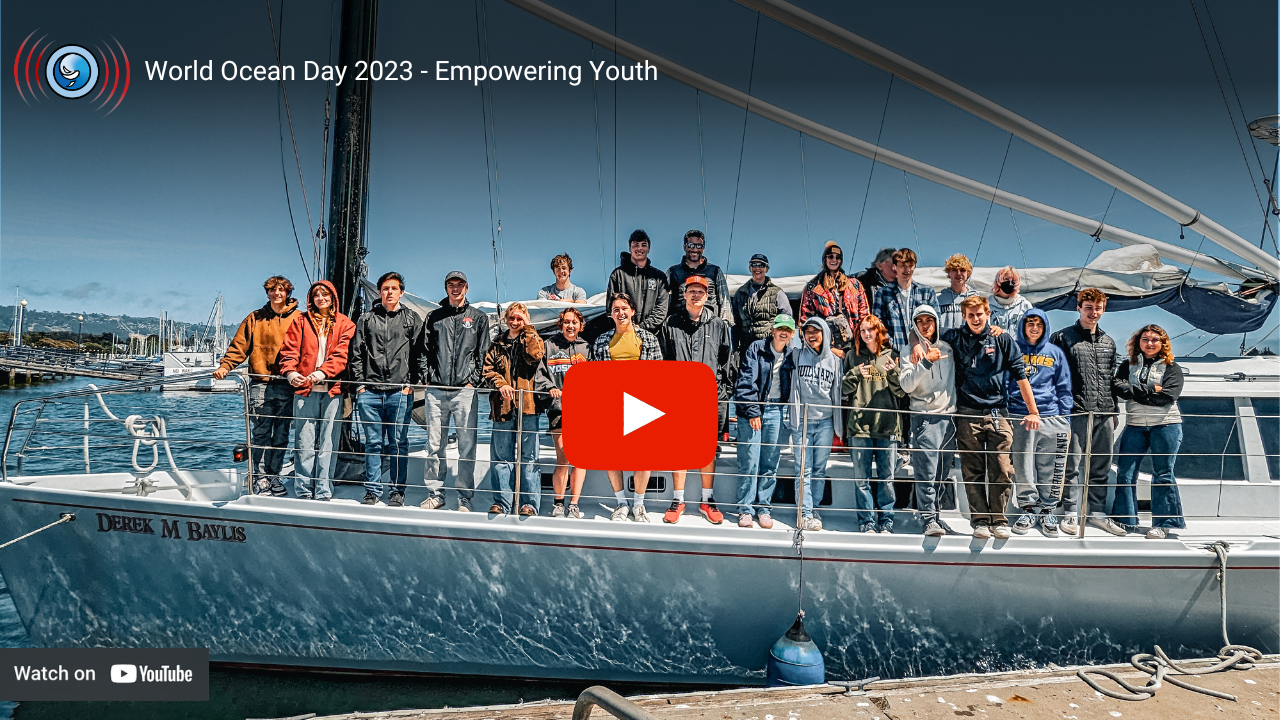

Ahoy OCR Community,
The third week of May, we embarked on a thrilling odyssey through the San Francisco Bay as part of our ongoing hands-on Citizen Science Program. In honor of World Ocean Day, I am sharing both my personal experience of the Voyage, and the voices of San Rafael High School (SRHS) students captured in this video, revealing the profound impact of ocean education. We invited two separate classes of AP Environmental Science students from SRHS, along with their teacher, Kent Morales, for a unique learning opportunity to explore and understand the waters of the San Francisco Estuary.
Before setting sail on the Derek M Baylis, we visited their classrooms to present the environmental history of the San Francisco Bay, unveiling the possibilities to be discovered, focusing on acoustics, plankton, and water quality.
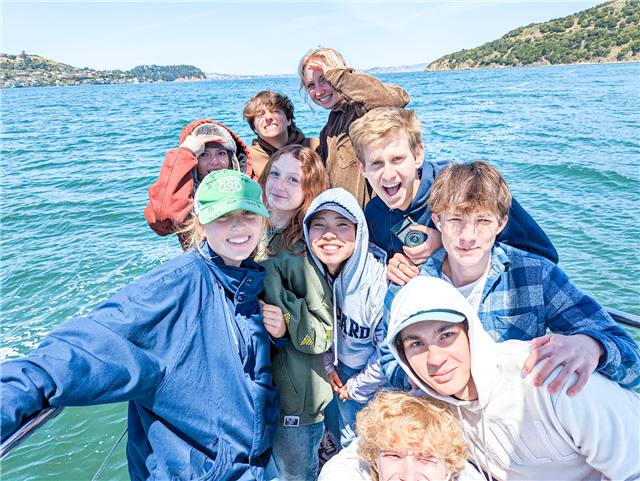 As the students arrived at the docks, their excitement filled the air, so tangible that even the most mysterious resident of the Bay Area, “Karl the Fog,” couldn’t help but wave goodbye, mist-ified by their infectious energy.
As the students arrived at the docks, their excitement filled the air, so tangible that even the most mysterious resident of the Bay Area, “Karl the Fog,” couldn’t help but wave goodbye, mist-ified by their infectious energy.
Under the embrace of blue skies and serene waters, we stepped aboard the Derek M Baylis. The spacious sailboat offered an ideal environment for students to divide into three groups and rotate among our three educational stations.
Our team selected six points of interest for data collection, with each class exploring two shared and two distinct locations. At each stop, Captain’s first mate distributed field log data sheets to the students, guiding them in recording information such as temperature, salinity, turbidity, and depth.
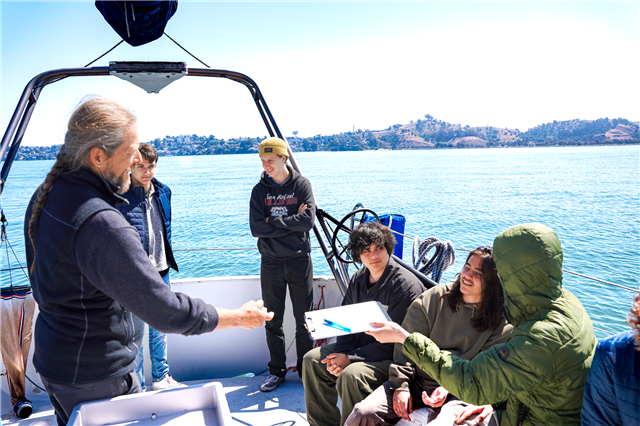
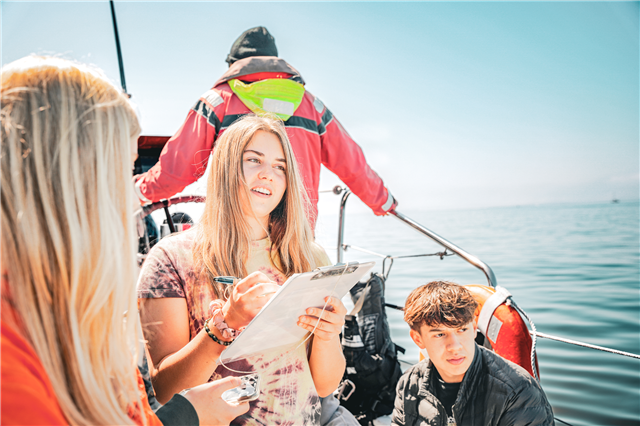
Our plankton specialist, Allison Adams, with SFSU, led our plankton station. After netting the plankton in the collection container (called a “cod”), the students were able to observe them under a video microscope, marveling at the zooplankton and phytoplankton that filled the screen – and learning about the diversity and importance of these minuscule organisms in the waters of their own backyard and found throughout the world. (Copepods, probably the most numerically abundant multi-celled organism on our planet, can be found from the deepest ocean to the water pools collected at the tops of trees!)
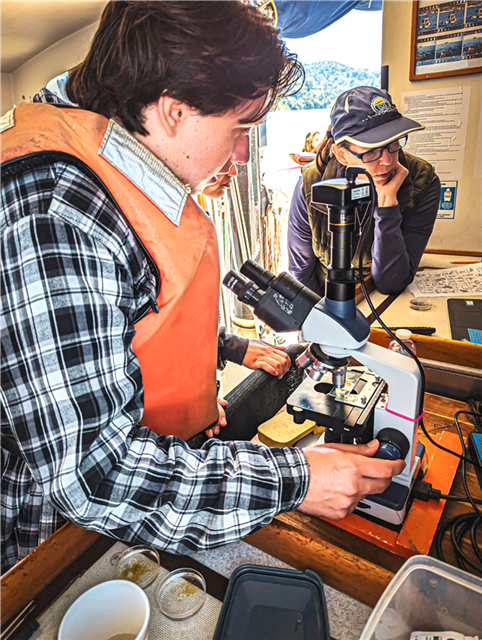
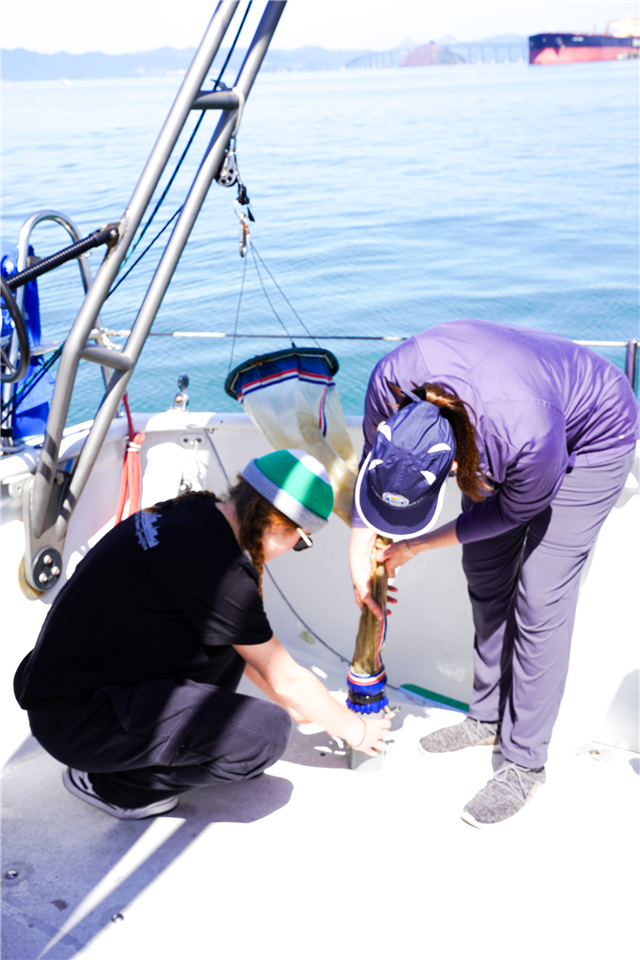
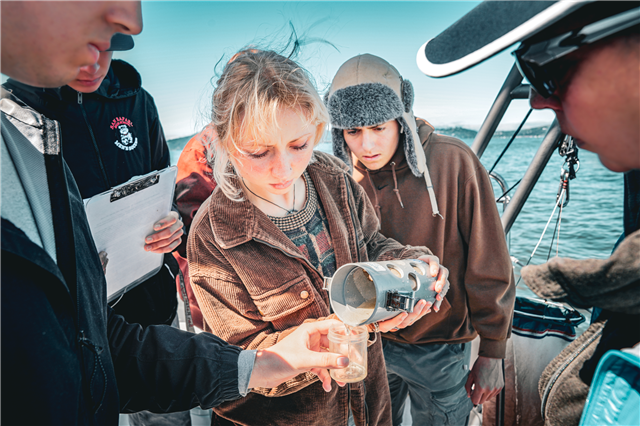 After the plankton trawls, our captain silenced the engine, and a separate group would join the “sound station” led by Michael and myself. The students were guided in deploying a hydrophone off the sailboat. We all listened intently, embracing a “mindful minute” where minimal sounds on board the boat were silenced to prevent interference with the hydrophone’s delicate recordings.
After the plankton trawls, our captain silenced the engine, and a separate group would join the “sound station” led by Michael and myself. The students were guided in deploying a hydrophone off the sailboat. We all listened intently, embracing a “mindful minute” where minimal sounds on board the boat were silenced to prevent interference with the hydrophone’s delicate recordings.
We heard the rhythmic “knocking” of sea perches, the chorus of snapping shrimp, the crunching of feeding fish, glimpses of elusive purrs that whispered of potential courting fish, and the noise from boats in the distance which completely drowned out any other potential animal sounds in the area. The sounds that reached the ears of each group of students ebbed and flowed, depending on the location at which the hydrophone was deployed.
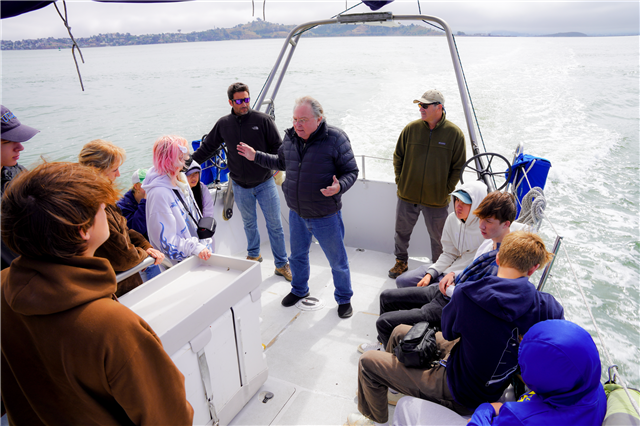
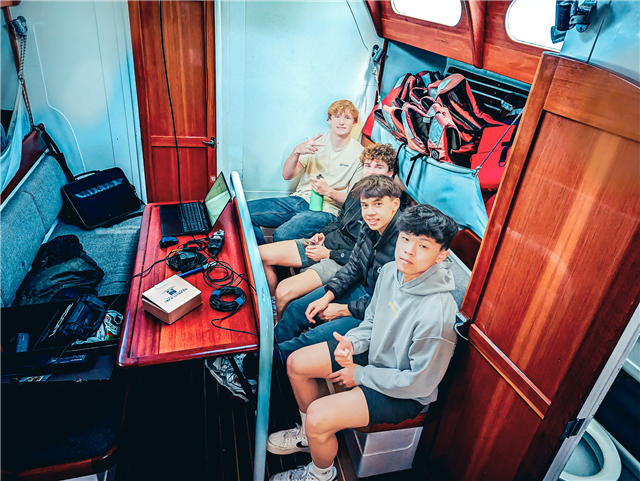
The students found themselves pondering: What is the mechanism behind fish sound production? And what messages are they conveying? While we delved into the realm of fish sounds and their purposes, it’s intriguing to imagine their underwater conversations, perhaps revolving around the latest eel grass fashion trends, or the exchange of closely guarded recipes for delectable kelp casseroles.
As the voyage progressed, we regaled the students with recordings of other marine animals of the bay. The extremely loud humming of midshipman transported the students to a time in the 80s when these sounds were disrupting the lives of houseboat residents in Sausalito, when the humming of these inner-tidal fishes sparked wild theories involving the military, sinister industrial projects, and even extraterrestrials.
Amplifying the students’ astonishment, we shared recordings of humpback whales, gray whales, and blue whales. Their first time listening to these majestic creatures left an indelible impression, realizing the incredible distances low-frequency vocalizations can travel in the sea.
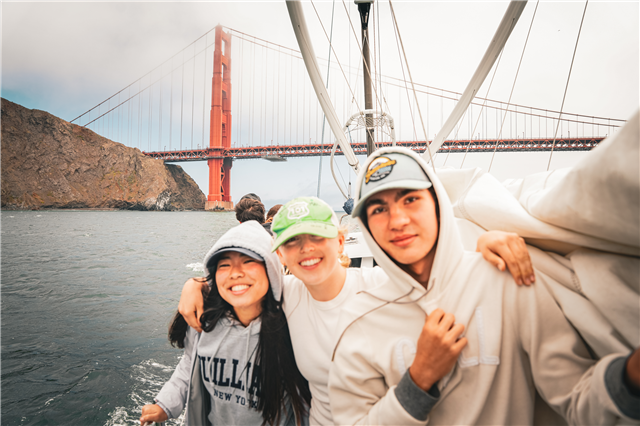

During our first voyage, we were treated to glimpses of charming harbor seals and seabirds. On the second adventure, we were pleasantly surprised with two gray whales feeding near Alcatraz and Angel Island. Playful harbor seals and porpoises also graced us with their presence. With favorable weather and tidal currents, we ventured beyond the bay, past the Golden Gate Bridge, and into the vast embrace of the Pacific Ocean. At the bow of the boat, surrounded by enthralled students, I witnessed their radiant smiles. One student couldn’t contain their excitement, exclaiming, “This is my first time under the Golden Gate Bridge!”
Amidst these encounters, we also witnessed the sobering sight of a deceased gray whale on a small beach beneath the Marin Headlands. This served as an opportunity to shed light on common reasons for whale deaths along the California Coast, such as ship strikes and malnutrition, and illuminated the interconnectedness of the marine food web—from microscopic plankton, to fishes, invertebrates, and whales.
These voyages created lasting memories for our students and imparted invaluable lessons. Field trips take students out of their comfort zones and provide them with extraordinary experiences they may not otherwise encounter.
We extend heartfelt gratitude to our ocean-loving community whose generous support makes these adventures possible! Each pursuit of knowledge kindles the ember of love, connecting us with the ocean’s grace—a timeless symphony that nourishes our shared home. For we are all students on this blue planet, entrusted with the duty to protect the ocean that cradles our collective existence.
In the spirit of the sea,
Daniela Huson
VP of Media & Marketing
Ocean Conservation Research
 As the students arrived at the docks, their excitement filled the air, so tangible that even the most mysterious resident of the Bay Area, “Karl the Fog,” couldn’t help but wave goodbye, mist-ified by their infectious energy.
As the students arrived at the docks, their excitement filled the air, so tangible that even the most mysterious resident of the Bay Area, “Karl the Fog,” couldn’t help but wave goodbye, mist-ified by their infectious energy.

 After the plankton trawls, our captain silenced the engine, and a separate group would join the “sound station” led by Michael and myself. The students were guided in deploying a hydrophone off the sailboat. We all listened intently, embracing a “mindful minute” where minimal sounds on board the boat were silenced to prevent interference with the hydrophone’s delicate recordings.
After the plankton trawls, our captain silenced the engine, and a separate group would join the “sound station” led by Michael and myself. The students were guided in deploying a hydrophone off the sailboat. We all listened intently, embracing a “mindful minute” where minimal sounds on board the boat were silenced to prevent interference with the hydrophone’s delicate recordings.






